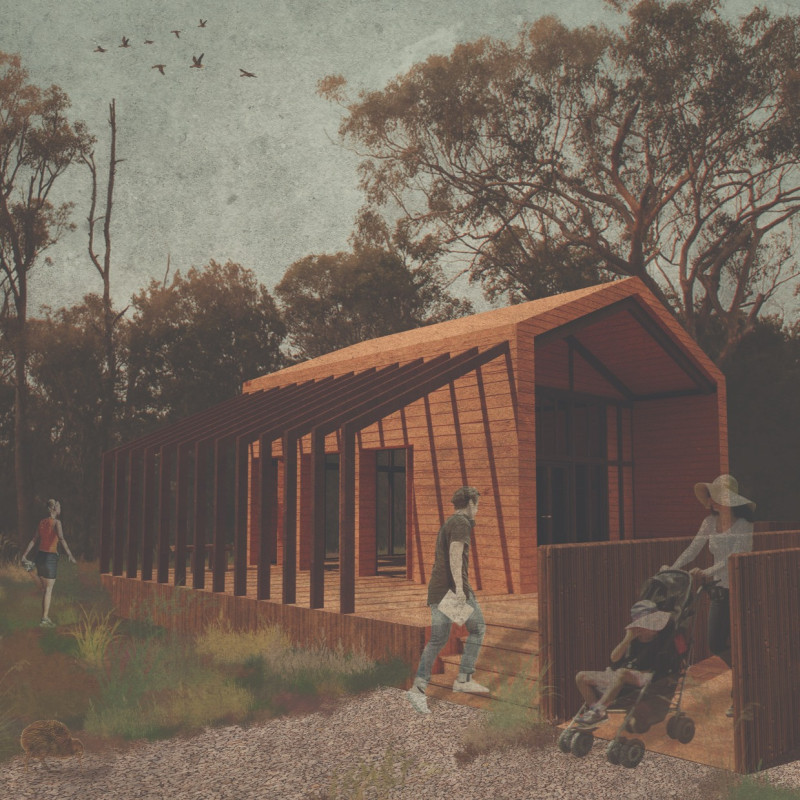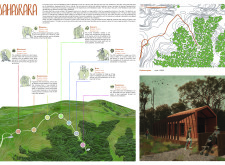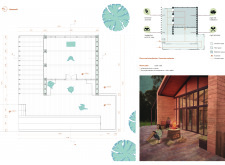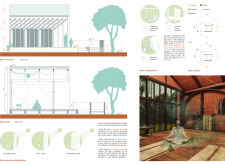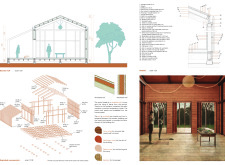5 key facts about this project
The Tiny Kiwi Meditation Cabin is located in New Zealand and forms part of a sensory path connecting the main residence to the cabin. The structure spans 30 square meters and integrates the principles of the chakra system into its design. It offers a space for meditation and reflection, inviting visitors into an environment that fosters tranquility. Accessibility is a key consideration, with the cabin featuring a supporting platform that includes steps and a ramp, making it welcoming for everyone.
Design Concept
The central idea of the design is to create a journey through the first six chakras, represented by various installations made from natural and recycled materials. Each installation engages the senses and prepares visitors for meditation, culminating in the Meditation Cabin, which represents the seventh chakra, Sahasrara. The thoughtful use of natural light and the connection between the indoor and outdoor spaces enhance the overall experience, creating a sense of harmony.
Spatial Configurations
The layout includes a porch that extends the usable area of the cabin, allowing for a connection between the indoors and the surrounding nature. This arrangement supports multiple uses, such as processing flower essences or enjoying quiet moments of reflection. With two glazed facades, the cabin invites light in while maintaining a visual connection with the landscape, making it an extension of the natural world outside.
Structural Features
The north facade features folding walls that offer several ways for users to interact with the outside environment. These walls provide the option for a fully open space, creating an easy flow between the meditation room and the porch when desired. There are also semi-open and fully closed configurations available, addressing varying levels of privacy and light. In addition, the cabin utilizes a ventilated wall and a roof interstice, which help manage temperature and moisture effectively.
Material Selection
The cabin employs a careful selection of materials that enhance its function and aesthetics. Rimu wood is used for structural elements, while red beech serves as the building's exterior. Beech wood is utilized for flooring and ramps, creating a unified look and feel. This choice of materials aligns with the project's goal of connecting with its natural setting. Each chakra installation adds another layer to the design, so visitors can experience not just the physical space, but also the feelings associated with fire, air, earth, water, ether, and light.
One of the significant installations symbolizes fire through lanterns in the Manipura section. In Anahata, sound-producing objects engage with the movement of air. The thoughtful integration of these elements invites a deeper connection with the space, encouraging users to reflect and engage with both themselves and the surrounding environment.


